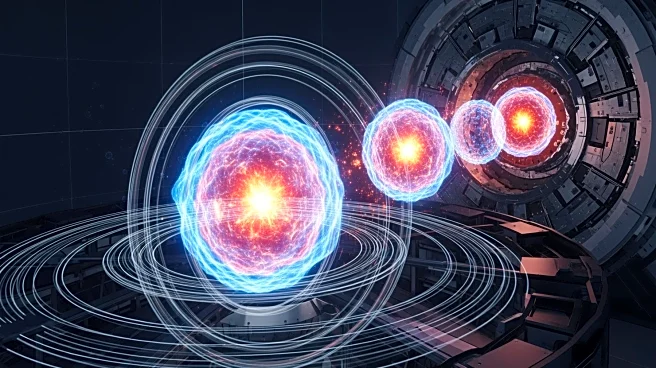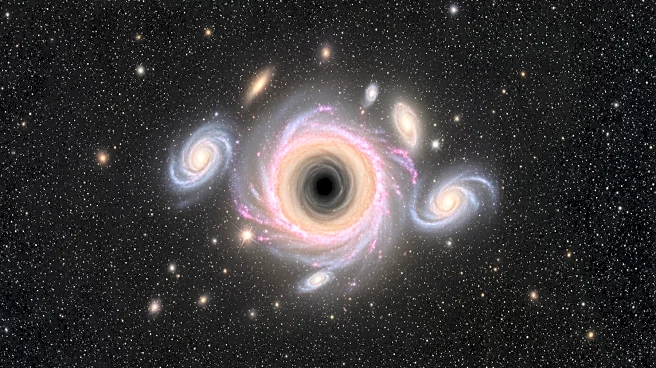What's Happening?
In a groundbreaking experiment, scientists at CERN have recreated 'cosmic fireballs' in a particle accelerator to study the stability of high-temperature plasma jets emitted by blazars. These jets, powered
by supermassive black holes, produce intense gamma-ray radiation. The experiment aimed to understand why low-energy gamma-rays, expected to be detected by space-based telescopes, are missing. The findings suggest that plasma beam instabilities are too weak to explain the missing gamma-rays, supporting the idea of a relic magnetic field in the intergalactic medium.
Why It's Important?
This experiment provides valuable insights into the behavior of cosmic jets and the origin of magnetic fields in intergalactic space. Understanding these phenomena is crucial for explaining the propagation of gamma-rays and the structure of the universe. The research also highlights the potential for laboratory astrophysics to test theories of the high-energy universe, offering a new dimension to cosmic studies.
What's Next?
The findings raise questions about the existence of relic magnetic fields and their role in the early universe. Future research may involve searching for physics beyond the Standard Model and using advanced facilities like the Cherenkov Telescope Array Observatory to probe fundamental cosmic questions.











